
Why can’t universities be like ‘Top Chef’?
WASHINGTON – Affirmative action is harming two minority groups in different ways, scholars told a Tuesday event hosted by the Federalist Society and Center for Equal Opportunity.
The center released a new study that explores wide disparities among three elite private universities in Asian-American admissions since the 1990s, showing their numbers have gone down when race is a factor.
“‘Too Many Asians?’ Affirmative Discrimination in Elite College Admissions” was released as Harvard University prepares for trial later this year or next in a lawsuit targeting its “holistic” admissions practices, which allegedly discriminate against Asian Americans.
Last month a federal judge ordered Harvard to make public thousands of pages from admissions documents marked “Confidential” or “Highly Confidential,” but not to redact them so much that they become “incomprehensible.”
A civil rights lawyer pushed back on the study’s findings and assumptions, claiming that affirmative action helps applicants of Asian descent and colleges need latitude to design their own admissions regimes.
Noting the popularity of cooking-competition shows such as “Top Chef,” Brenda Shum of the Lawyers’ Committee for Civil Rights Under Law asked why universities can’t create their own “box” of admissions ingredients.
‘One can infer discrimination from this trend data’
The center’s study looked at admissions trends from the California Institute of Technology, Massachusetts Institute of Technology and Harvard since the 1980s. The first has no race preferences, the second uses race preferences, and the third gives preference by race, legacy and “celebrity” status.
Even as their numbers have shot up in both America and American colleges – 17 million and more than 1 million – Asian Americans in elite colleges have “remained steady or somewhat declined” since their high points in the 1990s, the study says.
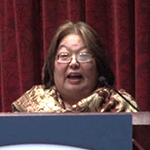 Asian-American undergrads are a plurality of students at Caltech, more than 40 percent, research fellow and study author Althea Nagai (left) told the event. This rivals their percentages at the University of California-Berkeley and UCLA, both of which are barred by state law from preferring certain races.
Asian-American undergrads are a plurality of students at Caltech, more than 40 percent, research fellow and study author Althea Nagai (left) told the event. This rivals their percentages at the University of California-Berkeley and UCLA, both of which are barred by state law from preferring certain races.
MIT is similar in many ways to Caltech, the study says: They are top-10 schools in U.S. News rankings located in areas with “large numbers of Asian Americans,” and both focus on STEM studies and admit roughly 8 percent of applicants.
Their trend lines for Asian-American admissions followed a similar pattern until 1995, reaching about 30 percent. After that, MIT’s Asian-American population “just kind of sits there at a constant” around 25 percent, Nagai said.
With its race preferences, as of fall 2016, MIT has six times as many black students and 40 percent fewer Asian-American students than Caltech, according to the study. Whites are a plurality (35 percent) at MIT and the second-largest group (29 percent) at Caltech.
MORE: Court forces Harvard to make public confidential admissions docs
Harvard’s Asian-American admissions peaked at 21 percent in the early 1990s and now sits at 17 percent, the study says: “It has stayed at roughly the same level for more than 25 years,” as the Asian-American applicant population has exploded. (The study notes that the most powerful preference at Harvard is legacy status: about 3 in 10 freshmen have legacy ties.)
“One can infer discrimination from this trend data,” Nagai said, particularly when considering that even 20 years ago, the admissions rate for Asian Americans in “elite private institutions” (18 percent) was lower than for whites (26), Hispanics (27) and blacks (31).
The figures are even more stark when looking at admissions rates by SAT score for different races: 77 percent of black students with scores of 1400-1600 got into those universities, followed by Hispanics (48), whites (40) and Asian Americans (30).
The study cites data collected in 1997 by Princeton University scholars Thomas Espenshade and Alexandria Walton for their 2009 book No Longer Separate, Not Yet Equal. The scholars also found that Asian Americans needed to score anywhere from 140 to 450 points higher on the SAT to match the “admissions probability” of whites, Hispanics and blacks.
This is no different than the original “Harvard plan” in the early 20th century to cut Jewish enrollment from 25 percent to 15 percent “without explicitly needing a quota,” Nagai said: All the university had to do was start considering non-academic factors, the predecessor to “holistic” admissions.
Hide your race to get ahead – then commit suicide
When the Supreme Court upheld the University of Michigan Law School’s race preferences in 2003’s Grutter decision, Justice Sandra Day O’Connor made clear that such programs must have a “termination point,” said Terry Eastland, senior fellow at the center.
The author of the opinion took the law school at its word that it would get rid of the program “as soon as practicable,” and O’Connor noted that it had been 25 years since her predecessor Justice Lewis Powell upheld the use of race in admissions in the Bakke ruling:
We expect that 25 years from now, the use of racial preferences will no longer be necessary to further the interest approved today.
Reflecting on this, Eastland asked: “What do we think will happen by 2028?”
There should be much more research like Nagai’s and that of Richard Sander (below), the UCLA law professor known for his “mismatch” theory that affirmative action hurts its recipients, said Yukong Zhao, president of the Asian American Coalition for Education.
MORE: Sander says affirmative action hurts minorities more than helps
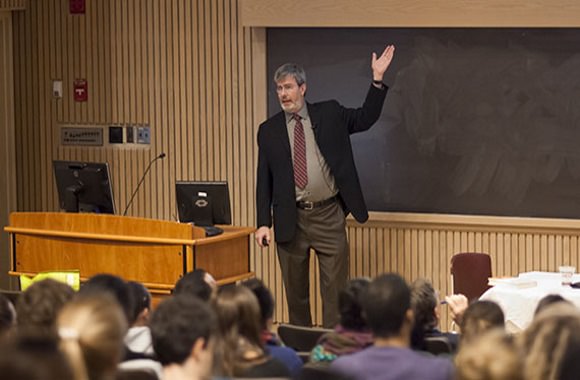
“It’s illegal, but more importantly, it’s immoral” when admissions officers treat Asian Americans according to racial stereotypes such as the high-income “model minority,” Zhao said. When students “have to hide their racial identity” to get into selective schools, they spend more time on schoolwork, develop depression and even commit suicide.
If Asian Americans are “overrepresented” in college admissions, it’s because “we cherish the American principle of equal opportunity and hard work,” he said. Zhao called for the Trump administration to do more to eradicate his predecessor’s policies that promote “racial balancing,” and to increase non-racial forms of aid for disadvantaged applicants.
Stuart Taylor co-wrote Mismatch with UCLA’s Sander, but their arguments “have fallen on deaf ears” since it was released several years ago, he told the event.
The National Journal contributing editor and former Brookings Institution scholar pointed to “the size of the gaps” between scores for preferred races and white or Asian classmates: “You get 200-400 points for showing up? It’s stunning.” He and Sander have interviewed black students who described their shock at entering elite institutions as “getting hit by a truck,” Taylor said.
“They are set up to fail” and they tend to “bomb out” of courses that lead to the most desirable careers, leading to “lasting loss of intellectual self-confidence,” he said. Such students would have learned more and probably been happier had they entered less selective schools.
The “pervasive dishonesty” of the admissions regime drives the consistently low performance of black students in their elite classes and their much higher failure rate in bar exams compared to whites, he said.
MORE: Trump admin wants Harvard admissions records made public
‘So-called Asian penalty’ is unrelated to affirmative action
Shum, who directs the Educational Opportunities Project at the Lawyers’ Committee, spent much of her time challenging the claims of other speakers.
“We wholly reject the analysis that underlies mismatch theory” and point to evidence that shows beneficiaries are “equally successful,” Shum said. It is her “personal belief” that she was accepted to the diversity-conscious University of Washington Law School based on her talent, not her minority status.
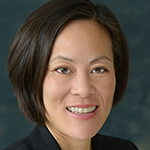 Affirmative action has historically served to help Asian Americans in employment and business as well, Shum said (right). The real hindrance to their higher enrollment is white beneficiaries, not the relatively small number of underrepresented minorities in elite schools.
Affirmative action has historically served to help Asian Americans in employment and business as well, Shum said (right). The real hindrance to their higher enrollment is white beneficiaries, not the relatively small number of underrepresented minorities in elite schools.
Polling has found that affirmative action is supported by most Asian Americans, she said: “It’s important to include and amplify all the diverse voices” among Asian Americans. (Zhao disputed this, citing the broad wording of the question compared to a later survey.)
Shum emphasized that Harvard does not use quotas or points that are “automatically assigned,” and said some institutions consider “up to 900” diversity factors. If Asian Americans are less represented in certain environments like liberal arts-heavy Yale University, perhaps it’s because these institutions are looking for different “qualities in candidates” than at schools with a heavy emphasis on science and engineering.
Not only has the Supreme Court repeatedly upheld holistic admissions, most recently in the Abigail Fisher challenges, but the “so-called Asian penalty” isn’t even related to affirmative action, Shum said. The test-score gap exists even when universities don’t consider race in admissions, and Princeton scholar Espenshade has disavowed how critics of preferences cite his work.
She agreed with a critic from the Heritage Foundation that the diversity rationale at the heart of the Bakke decision can pigeonhole students with the assumed views of their racial group. It’s good to remember there is “diversity within diversity,” Shum said: “You are not a spokesperson for your race.”
MORE: Whistleblower professor exposes race-based ‘cheating’ at UCLA
IMAGES: Federalist Society Regulatory Transparency Project
Like The College Fix on Facebook / Follow us on Twitter

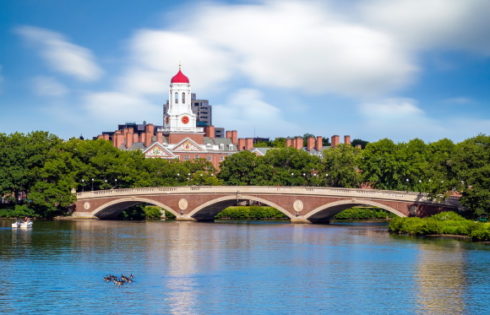
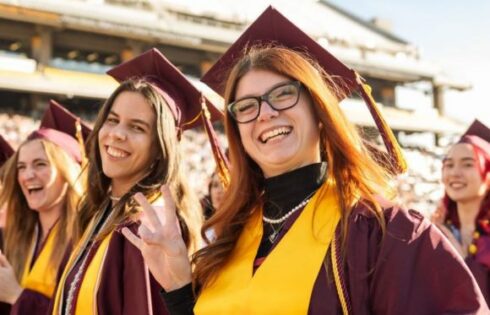



Please join the conversation about our stories on Facebook, Twitter, Instagram, Reddit, MeWe, Rumble, Gab, Minds and Gettr.